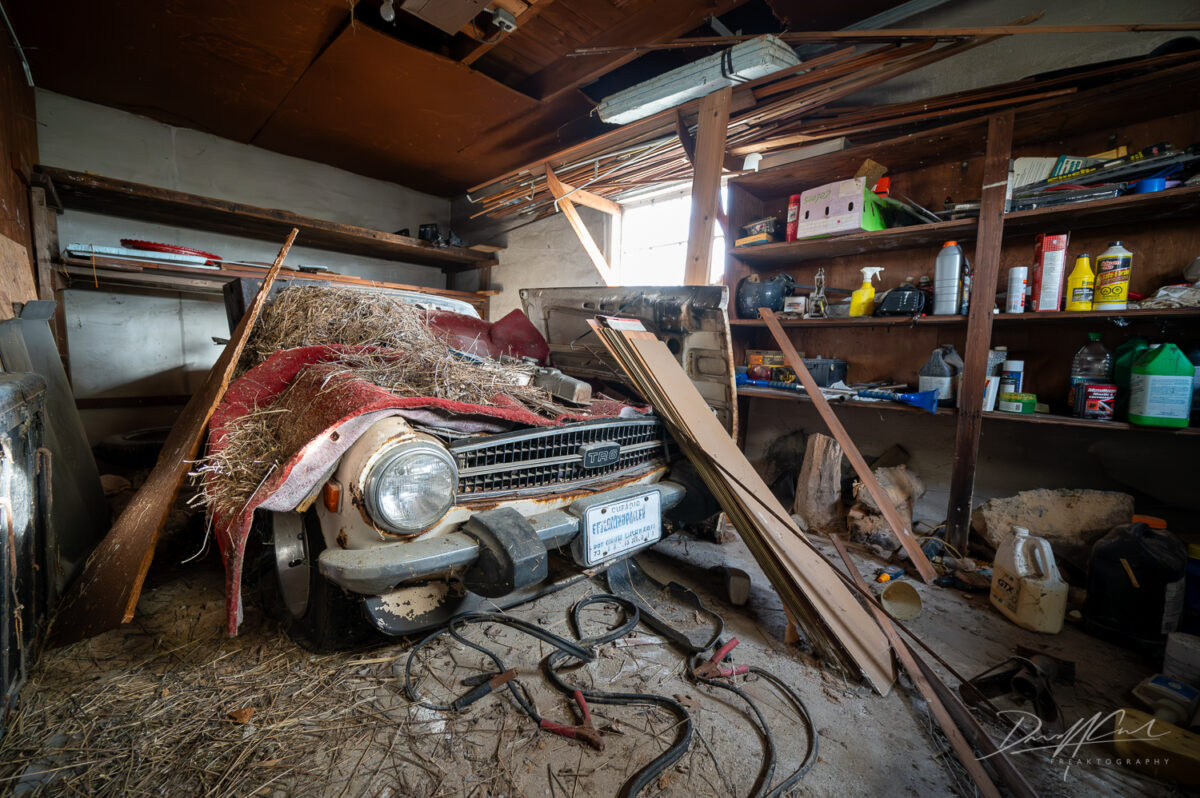As urban explorers, we chase the thrill of uncovering forgotten spaces — abandoned homes, decaying hospitals, timeworn industrial sites — all while documenting the slow, beautiful creep of nature reclaiming what was once ours. But with that thrill comes a set of very real risks. One that often goes overlooked, yet could be life-threatening, is Hantavirus.
Whether you’re a seasoned urbex veteran or just getting started, it’s crucial to understand what Hantavirus is, how it’s transmitted, and how to protect yourself while exploring.
What Is Hantavirus?

Hantavirus Pulmonary Syndrome (HPS) is a rare but potentially deadly illness caused by viruses spread mainly by rodents, especially deer mice in North America. The virus is carried in their urine, droppings, and saliva, and it becomes a danger to humans when those materials dry out and become airborne, often as dust particles we unknowingly breathe in.
This is a major concern in abandoned buildings, where rodent infestations are common and ventilation is minimal.
How Urban Explorers Are at Risk of Hantavirus
Abandoned places are prime territory for rodents to nest and multiply without disturbance. When we enter these buildings — often kicking up dust while walking, moving debris, or opening old drawers and cabinets — we’re potentially stirring up contaminated particles. Add that to the fact that these structures are rarely cleaned, poorly ventilated, and sometimes completely sealed, and you’ve got a recipe for exposure.

Signs of Rodent Activity to Watch For

Before diving deep into a building, take a moment to scan for any signs of rodent activity:
- Droppings (tiny, pellet-like)
- Nests made from shredded insulation, paper, or fabric
- Smear marks or oily tracks along baseboards
- Strong ammonia-like odor (often a sign of accumulated urine)
- Chewed wires or wood
If any of these signs are present, especially in enclosed areas like attics or basements, proceed with extreme caution or consider turning back.
Symptoms of Hantavirus: What Happens If You Get It
Hantavirus can feel like a bad case of the flu — at first. That’s what makes it especially dangerous.
Initial symptoms (1–2 weeks after exposure):
- Fever
- Fatigue
- Muscle aches (especially in large muscle groups like thighs, hips, back, shoulders)
- Headaches, dizziness, chills
- Nausea, vomiting, diarrhea
Later symptoms:
- Coughing
- Shortness of breath
- Fluid buildup in the lungs
Severe respiratory distress
There is no specific cure, and the disease progresses rapidly. About 1 in 3 cases is fatal. If you believe you’ve been exposed and begin experiencing symptoms, seek medical attention immediately and inform healthcare workers of your potential exposure to rodent-infested environments.
How to Protect Yourself While Exploring
While Hantavirus may sound scary, there are steps you can take to reduce your risk:
1. Wear a Proper Respirator
- A simple cloth mask won’t cut it.
- Use an N95 or P100 respirator, ideally with a dual cartridge filter designed for dust and particulates.
2. Avoid Stirring Up Dust
- Walk gently, avoid sweeping or kicking up debris.
- If you need to move something, do it slowly and carefully.
3. Don’t Enter Rodent-Infested Areas
- If the signs are obvious, or you’re overwhelmed by the smell of urine or feces, don’t risk it.
4. Wear Gloves and Avoid Touching Your Face
- Gloves protect your hands from direct contact with contaminated surfaces.
- Resist the urge to rub your eyes or wipe sweat from your brow while inside.
5. Disinfect Your Gear
- After the explore, clean your gear and clothes.
Consider having a “dirty bin” in your vehicle where contaminated items can be sealed until they can be washed.
Exploring forgotten spaces is an amazing experience — one that brings us closer to history, decay, and beauty all in one. But it’s important to balance that curiosity with smart practices and safety precautions. Hantavirus might be rare, but it’s real, and it doesn’t care if you’re there for the perfect shot or just taking a peek.
Stay curious, stay safe, and always know what you’re walking into.
If you found this article helpful, feel free to share it with your fellow explorers — and remember to always do your research before entering unknown territory. Your lungs (and your loved ones) will thank you.
